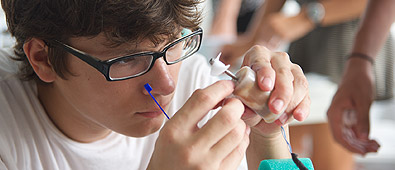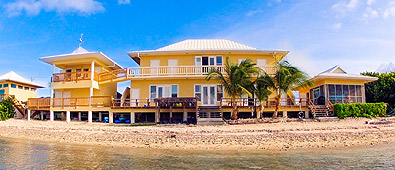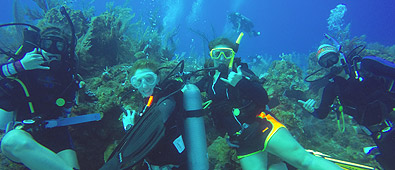Facilities
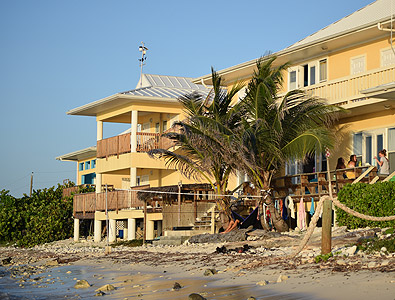 The Little Cayman Research Centre (LCRC) is located on the north side of Little Cayman. It is approximately 6,600 square feet in size and situated on 2 acres of land with 1,400 feet of reef-protected beach. The LCRC opens onto the beautiful Caribbean Sea, with the world-renowned Bloody Bay Marine Park less than 1/2 mile to the west.
The Little Cayman Research Centre (LCRC) is located on the north side of Little Cayman. It is approximately 6,600 square feet in size and situated on 2 acres of land with 1,400 feet of reef-protected beach. The LCRC opens onto the beautiful Caribbean Sea, with the world-renowned Bloody Bay Marine Park less than 1/2 mile to the west.
CCMI is a fully operational research institute, open throughout the year and includes an in-house team of researchers, as well as many visiting researchers and education groups. LCRC can house up to 24 researchers or students in dormitories and has and additional 7 private rooms for staff or researchers. There is office space to accommodate visiting scientists and a VIP suite that offers additional privacy away from the larger groups.
The institute was designed by architect John Doak and has a series of connected pavilions (see figure below). The Main Pavilion (centre), Kitchen Pavilion (right), and Outdoor Wet Lab Pavilion (left) form the main core of the centre. A fully sustainable Bath House Pavilion (far left) includes showers and washroom facilities and is completely off the grid (including composting toilets which take a little bit of getting used to but are a fantastic environmental solution to waste).
 LABS
LABS
The new (NSF funded) wet lab that was completed in 2014, has four separate work areas on the first floor: (i) a temperature-controlled lab; (ii) covered deck space to allow outdoor experiments and sample processing away from sun exposure, (iii) a screened area with calibrated shade cloth for ambient temperature, variable light experiments, and (iv) an open area for ambient temperature and light experiments.
The indoor wet lab is climate controlled and is equipped for processing field samples with multiple fresh-and salt-water taps with room for small aquaria on fiberglass flow tables. Water is pumped through a simple seawater filtration system from the adjacent lagoon. This lab has been used for ocean acidification experiments, climate change impacts on Nassau and tiger grouper larvae, and lionfish research. It has the capacity to support a variety of projects.
CCMI also has a temperature-controlled lab with fresh water and a deionized water system. This lab has bench space for research projects which have included ocean acidification analyses, alkalinity titrations, pH measurements, DNA and RNA extractions, coral disease studies, etc. Our chemical storage area includes four designated areas for organic, inorganic, flammable, and acid chemicals. Safety equipment includes a fume hood, spill kit, and eye wash station. All of the station’s precision instrumentation and equipment is stored in this lab and is available for rental or use including Leica, Fisher Stereomaster, and Micromaster microscopes; HOBO temperature and light sensors; GPS units; a deployable SeaFet pH meter; YSI and ORION 5 Star meters and accessory probes to measure pH, temperature, conductivity, and dissolved oxygen; two centrifuges; hot plates; and a general purpose incubator. Camera equipment includes an aquatic underwater housing and Nikon D90 SLR camera and a Panasonic digital video camera and housing, along with Sony, Olympus, and GoPro student research cameras.
Equipment includes a refrigerator, a freezer, and a drying oven. Basic field equipment, including tape measures, calipers, sieves, quadrats, and our coral nursery supplies are also stored here.
 FLEET AND DIVE EQUIPMENT
FLEET AND DIVE EQUIPMENT
CCMI has three boats, including a 34 foot Newton (hull) purpose built dive boat with a capacity for 16 divers with 32 tanks, or 18 snorkelers. The 21 foot Mako dive boat has a capacity of 4 divers with 8 tanks, or 6 snorkelers. A 12 foot Carolina skiff with a capacity for 2 divers with tanks, or 4 snorkelers in the lagoon is available. The boats are chartered with a boat captain for research.
CCMI is a fully equipped scuba diving facility, with 40 scuba tanks, 11 Nitrox tanks and ~20 sets of rental scuba gear for researchers and students. A new Bauer compressor was installed in 2016 and is located in the ground floor of the bath house pavilion for filling scuba tanks on site.
There are two pickup trucks and two 15-person vans for transportation around the island. A fleet of beach bikes and kayaks are available for visiting scientists and students.

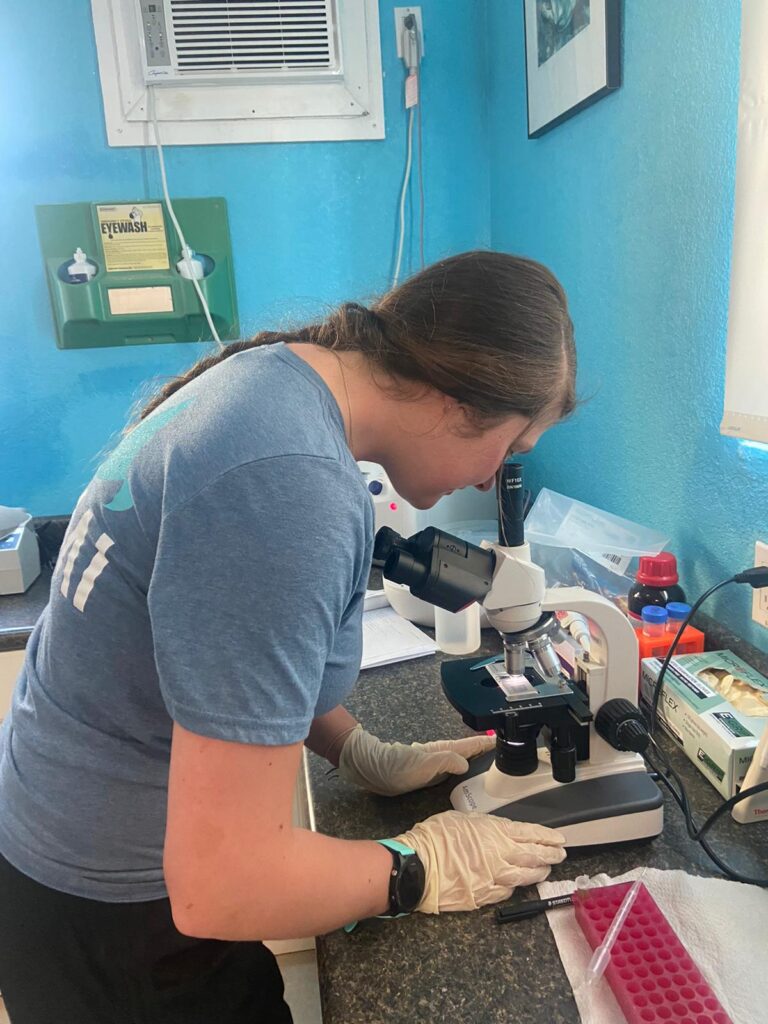 LABS
LABS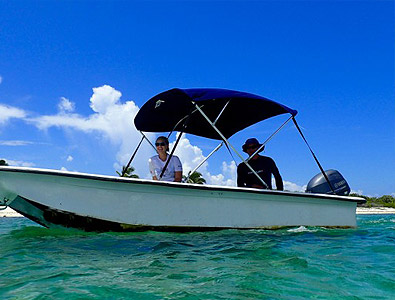 FLEET AND DIVE EQUIPMENT
FLEET AND DIVE EQUIPMENT 